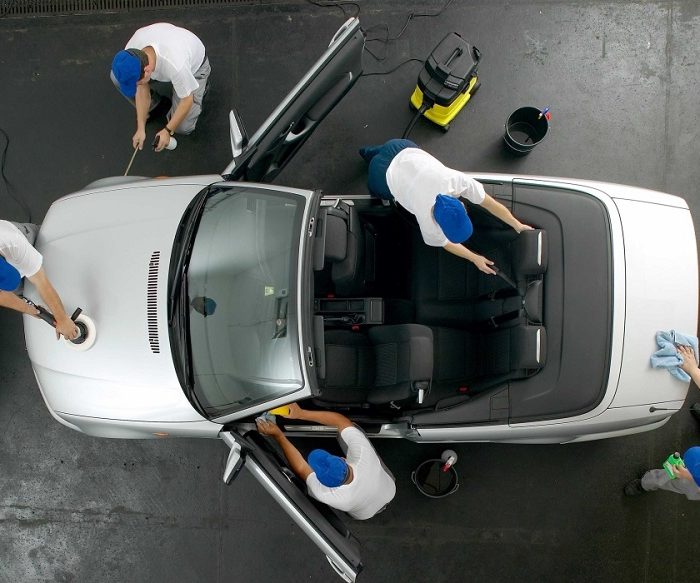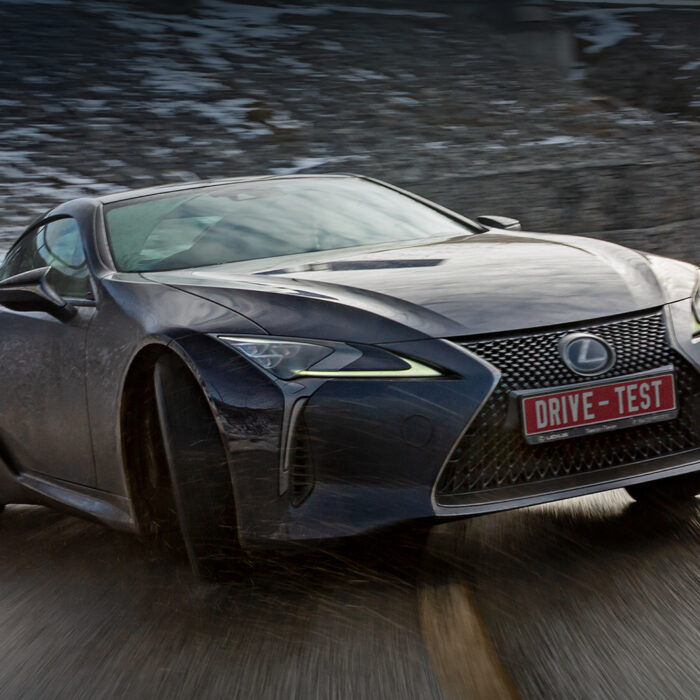The Sorento has no problem with demand. Information about rare cars in stock is passed on by word of mouth. Those customers who are ready to wait lined up in a semi-annual queue, without even having an idea how much the crossover will cost at the time of supply. I don’t see any reasons to dissuade them, and hardly anyone will listen — the price ratio to the number of options is too attractive.
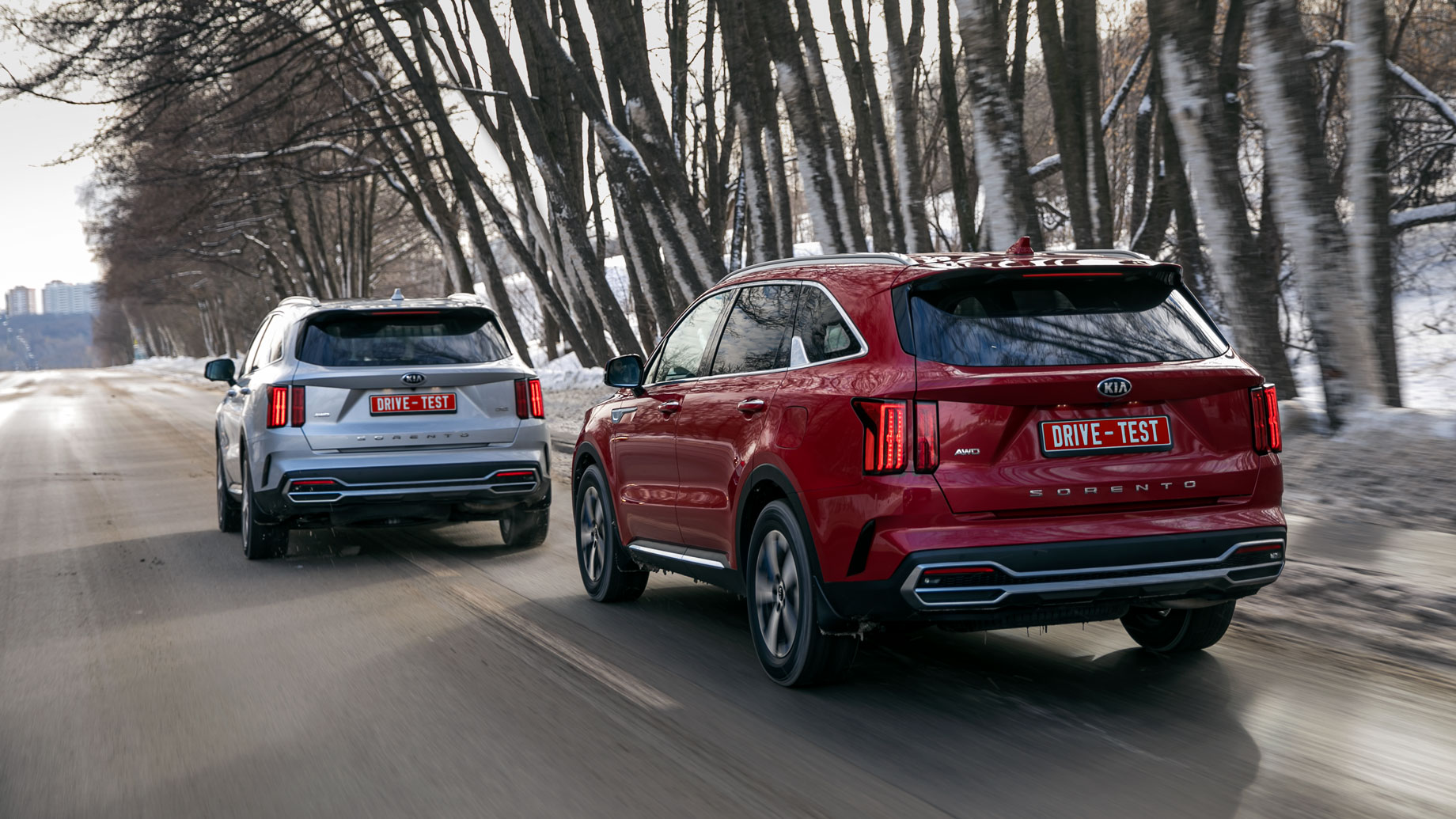
And which version should you choose? The coveted 2.2 CRDI turbodiesel is equipped only with a preselective robotized gearbox with two clutches surrounded by prejudices. Nothing is known about the lifetime of this pair yet, but its sales have already been banned several times due to incorrect software. In turn, the traditional automatic gearbox is installed only in the 2.5 naturally aspirated gasoline engine, with undistinguished datasheet specifications and long-standing reputation as a lover of oil eating.
More often people are interested in a diesel engine, despite the fact that it is more expensive, since it is available only in two top-end trim levels: Premium and Premium+ (as the test one). But only they offer an electronic parking brake with a Hold function. A buyer of any gasoline version has to put up with an archaic foot brake. In addition, the top “Plus” has a projection display and adaptive cruise control. The latter is far from ideal, but in the absence of a limiter, it is better than nothing.
The diesel Sorento has two problems offhand. Firstly, it is equipped only with large diameter wheels: 19-20 inches. In our case, the silver car is shod in 255/40 R20 Nokian Hakkapeliitta R3 SUV tires. And the suspension is already not soft: the chassis reproduces small and medium irregularities of the roadway in great detail. In addition, it’s a little noisy in the cabin. Low-profile wide tires both hum more obtrusively and aggravate the vibration picture, even though in the cold the pressure drops by a couple of tenths relative to the prescribed 2.4 atm.
The second problem is related to the behavior of the semi-automatic box in traffic jam and parking modes. It is in a hurry to unlock the clutch at any gas pedal release at low speed, and when it tries to add revs again, it shifts the car into gear with a delay. Sometimes you hang without a torque for a good second, and the recovery of traction is accompanied by a jerk. However, the software of the “robot” is constantly being improved. The next service campaign to update the software became known in April last year.
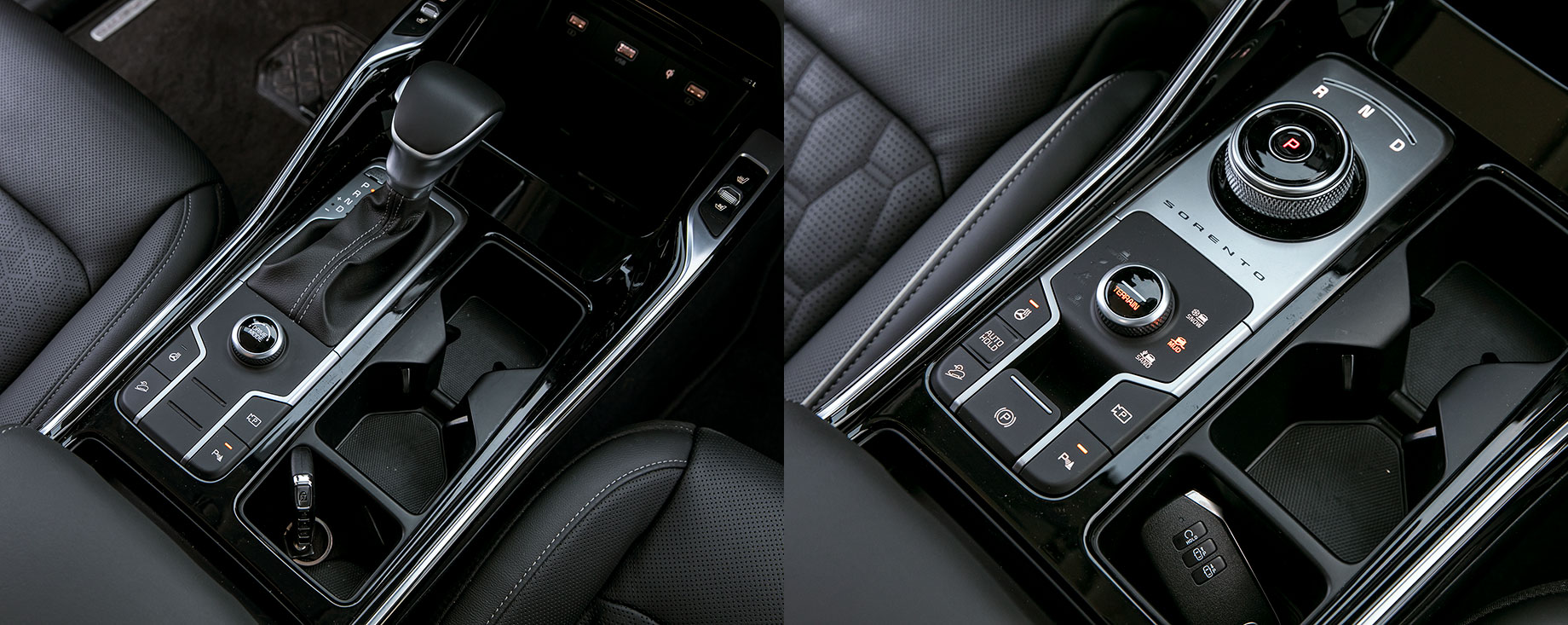
The gearbox manages to find the optimal mode for the turbodiesel in the normal flow and on the highway. Here, the silver Sorento seems to be significantly lighter than the red gasoline one due to the ability to accelerate without strain on the move. I spend most of my time driving a diesel crossover: it’s more convenient in the city with it. However, if you suddenly need to rush, the Kia demonstrates inertia that goes out of line. With active pilotage, you shouldn’t count on the trajectory adjustment with thrust, because after the gas is released, the Sorento keeps revving for some time.
Finally, on the off-road, the “robot” is more wary than the usual automatic transmission, and as a result, the Sorento is helpless in harmless situations like a simple cross-axling. Moreover, despite the large selection of off-road modes, the only appropriate one on unstable pavement is Sport that proactively locks the clutch.
Ironically, it is because of this that Sport turns out to be the most uninteresting on the icy handling track. The clamped rear part gives the crossover a marked understeer, and it is only accentuated when you press the gas pedal. The diesel Sorento is also noticeably vibro-loaded at idle, while there is peace and quiet in the gasoline car. But customers are ready to put up with this, because in addition to the winning equipment, there is also better dynamics with less fuel consumption on the diesel side. During the test, according to the receipts from gas stations, the Sorento 2.2 CRDI required an average of 9.5 liters/60 miles, and 2.5 MPI — 13.2 liters.
In the asset of the gasoline car, there is an adequacy of responses to the fuel supply and a more predictable operation of the automatic gearbox in difficult situations. There is also no significant loss in steerability or lack of information in the electric assist located on the steering shaft compared to the one installed on the rack of the diesel Sorento. For ease of comparison, both cars are shod in tires of the same model.
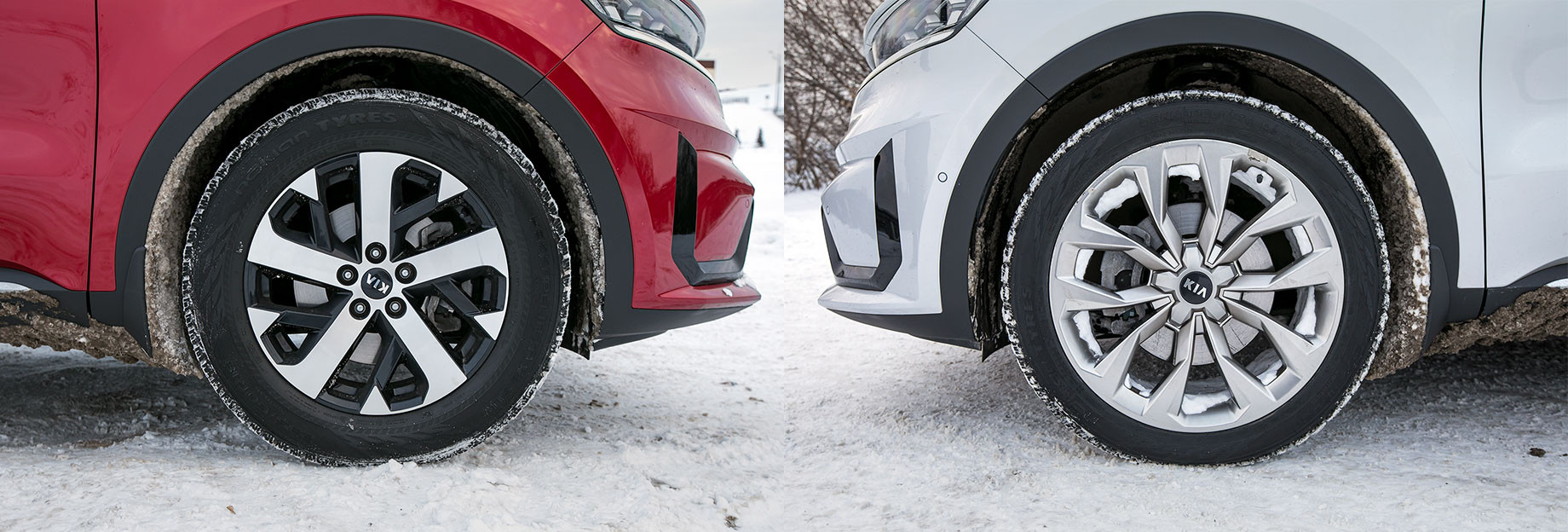
I believe that the design differences are primarily due to the peculiarities of the power steering’s integration with driving assistants. In particular, the diesel Sorento Premium+ is able to self-park in cramped spaces. It even drives into the garage, although not every crossover willingly gets in there because of parking sensors’ hysterics. The Kia follows orders from the key and on uneven surfaces, but there is still a certain limit on force. The system stops the engine if it understands that overcoming an obstacle requires so much gas that the stopping distance can’t be predicted.
The cheaper gasoline Prestige can’t boast of anything like that. There is not only a foot parking brake, but also a usual transmission control lever instead of an elegant rotary shifter. In my opinion, it is more convenient and allows you to engage the desired gear faster. However, it limits the level of automation. Despite the large surcharge on the Prestige, the traditional selector also remained in the Premium diesel version, although, for example, there is already a 12-inch display instead of analog scales.
Those auxiliary systems that require an advanced front radar are excluded from the DriveWise set: adaptive cruise control, remote parking, cyclist protection… Nevertheless, it is the Premium without a plus that is most in demand by diesel car buyers, which generally accounted for about 47% of Sorentos sold in the first quarter of 2021.
It is characteristic that the greatest demand in the gasoline line is not the Prestige at all, as one might think, but a five-seat version of the Luxe. It is distinguished from the test Prestige by simpler optics, front windows without sound-absorbing film, a smaller multimedia screen, eight no name speakers instead of twelve with a Bose mark. There is no ventilation of the front seats, and the passenger one has no electrical adjustments.
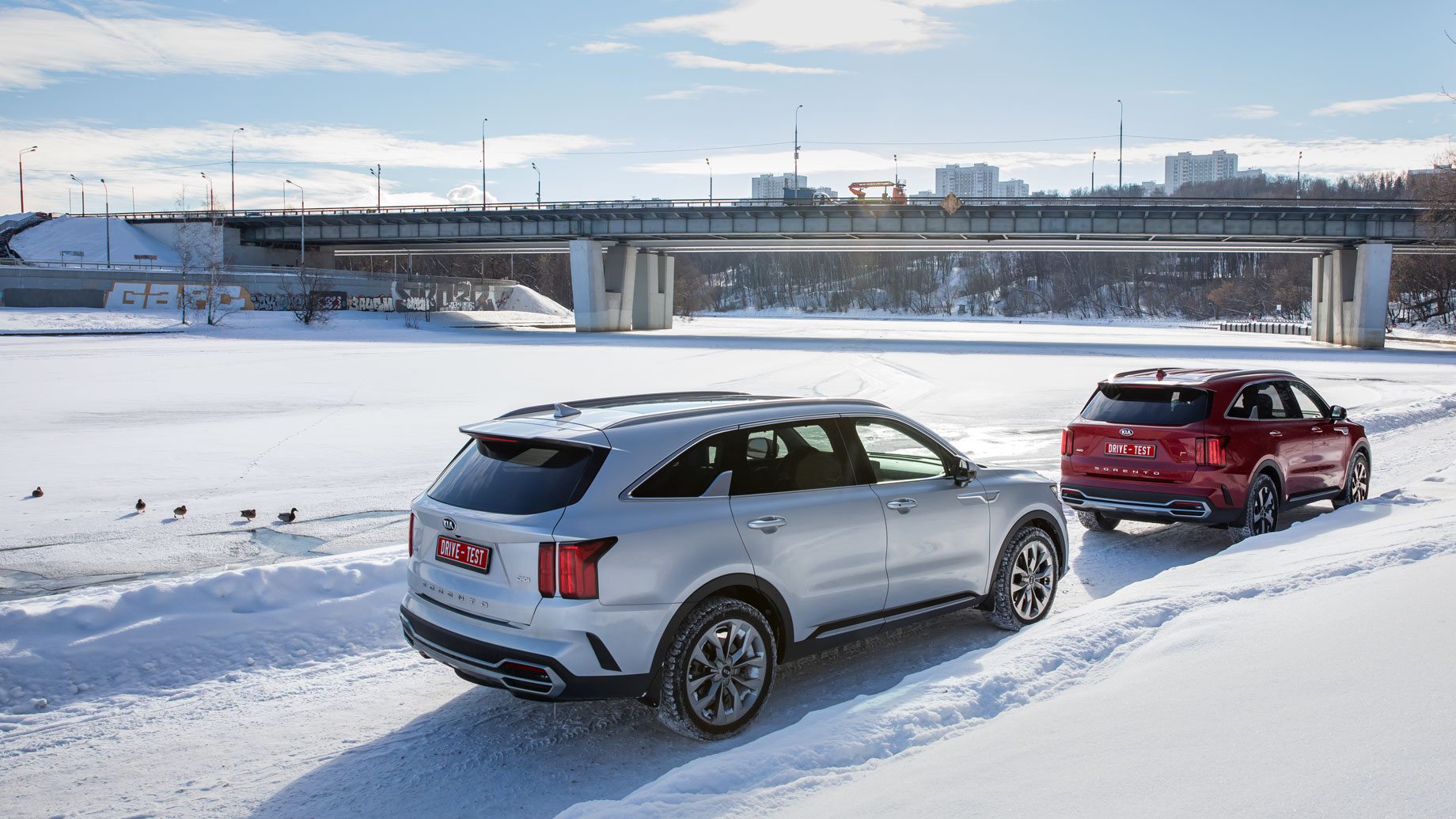
Although there was no Luxe version on the test, it seems to me to be the most balanced in absentia. The naturally aspirated 2.5 engine is not so stunted and voracious as to justify more than half a million extra for the diesel closest in the hierarchy. Even without that, KIA dealers take customers to the cleaners. In addition, it is warmer in the cabin of the gasoline Sorento during short winter trips. And the owners of the diesel version recommend installing a pre-heater on it, despite the presence of a factory electric heater…
If there is something that worries potential buyers more than the service life of a semi-automatic diesel, it is the prospect of sales of the Sorento with a gasoline V6 3.5. It is unlikely that it will greatly affect the dominant position of the Luxe 2.5, and diesel versions will have an alternative.
This is a translation. You can read the original here: https://www.drive.ru/test-drive/kia/605372cb175e9e50eca9cc43.html

Published June 23, 2022 • 8m to read




